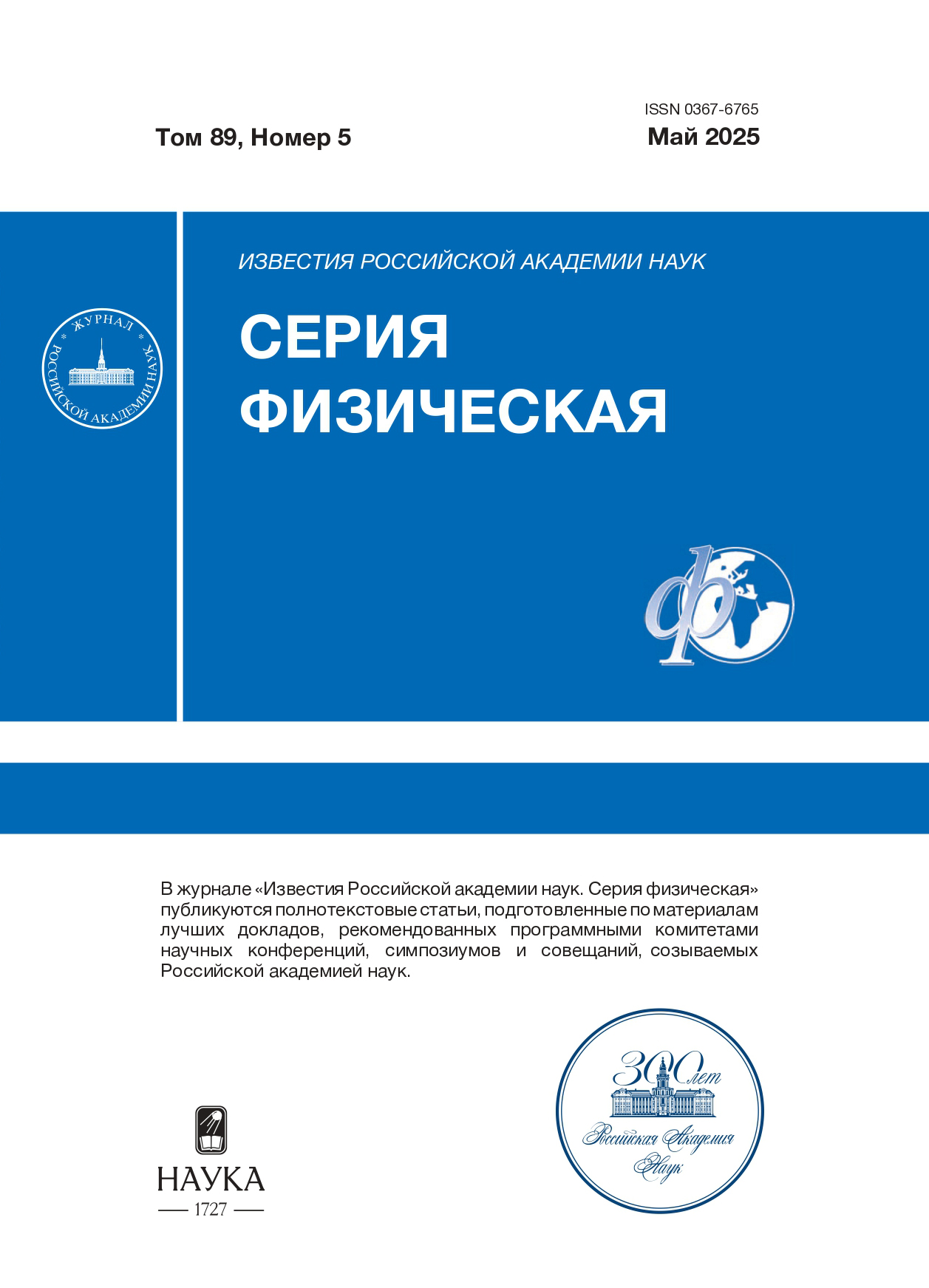Study of time parameters of interplanetary disturbances with magnetic clouds
- Autores: Abunina M.A1, Belov A.V1, Shlyk N.S1, Belov S.M1, Abunin A.A1, Oleneva V.A1, Yanke V.G1
-
Afiliações:
- Pushkov Institute of Terrestrial Magnetism, Ionosphere and Radio Wave Propagation of the Russian Academy of Sciences
- Edição: Volume 89, Nº 5 (2025)
- Páginas: 733-737
- Seção: Physics of Auroral Phenomena
- URL: https://jdigitaldiagnostics.com/0367-6765/article/view/691648
- DOI: https://doi.org/10.31857/S0367676525050085
- ID: 691648
Citar
Texto integral
Resumo
Palavras-chave
Sobre autores
M. Abunina
Pushkov Institute of Terrestrial Magnetism, Ionosphere and Radio Wave Propagation of the Russian Academy of Sciences
Email: abunina@izmiran.ru
Moscow, Russia
A. Belov
Pushkov Institute of Terrestrial Magnetism, Ionosphere and Radio Wave Propagation of the Russian Academy of SciencesMoscow, Russia
N. Shlyk
Pushkov Institute of Terrestrial Magnetism, Ionosphere and Radio Wave Propagation of the Russian Academy of SciencesMoscow, Russia
S. Belov
Pushkov Institute of Terrestrial Magnetism, Ionosphere and Radio Wave Propagation of the Russian Academy of SciencesMoscow, Russia
A. Abunin
Pushkov Institute of Terrestrial Magnetism, Ionosphere and Radio Wave Propagation of the Russian Academy of SciencesMoscow, Russia
V. Oleneva
Pushkov Institute of Terrestrial Magnetism, Ionosphere and Radio Wave Propagation of the Russian Academy of SciencesMoscow, Russia
V. Yanke
Pushkov Institute of Terrestrial Magnetism, Ionosphere and Radio Wave Propagation of the Russian Academy of SciencesMoscow, Russia
Bibliografia
- Burlaga L., Sittler E., Mariani F., Schwenn R. // J. Geophys. Res. 1981. V. 86. P. 6673.
- Burlaga L.F., Behannon K.W. // Solar Phys. 1982. V. 81. P. 181.
- Klein L., Burlaga L. // J. Geophys. Res. 1982. V. 87. No. A2. P. 613.
- Gosling J.T., Bame S.J., McComas D.J., Phillips J.L. // Geophys. Res. Lett. 1990. V. 17. No. 7. P. 901.
- Badruddin B., Yadav R.S., Yadav N.R. // Solar Phys. 1986. V. 105. No. 2. P. 413.
- Fadaaq M., Badruddin B. // Astrophys. 2021. V. 64. No. 2. P. 210.
- Fadaaq M., Badruddin B. // Astrophys. Space Sci. 2020. V. 366. Art. No. 10.
- Melkumyan A.A., Belov A.V., Abunina M.A. et al. // Month. Notes Royal Astron. Soc. 2022. V. 515. No. 3. P. 4430.
- Melkumyan A.A., Belov A.V., Shlyk N.S. et al. // Month. Notes Royal Astron. Soc. 2023. V. 521. No. 3. P. 4544.
- Мелкумян А.А., Белов А.В., Абунина М.А. и др. // Геомагн. и аэрономия. 2022. Т. 62. № 3. С. 283
- Melkumyan A.A., Belov A.V., Abunina M.A. et al. // Geomagn. Aeron. 2022. V. 62. No. 3. P. 159.
- Абунина М.А., Белов А.В., Шлык Н.С. и др. // Геомагн. и аэрономия. 2024. Т. 64.№1. С. 29
- Abunina M.A., Belov A.V., Shlyk N.S. // Geomagn. Aeron. 2024. V. 64. No. 1. P. 24.
- Matzka J., Stolle C., Yamazaki Y. et al. // Space Weather. 2021. V. 19. No. 5. Art. No. e2020SW002641.
- Белов А.В., Ерошенко Е.А., Янке В.Г. и др. // Геомагн. и аэрономия. 2018. Т. 58. № 3. С. 374
- Belov A.V., Eroshenko E.A., Yanke V.G. et al. // Geomagn. Aeron. 2018. V. 58. No. 3. P. 356.
- Shlyk N.S., Belov A.V., Abunina M.A. et al. // Month. Notes Royal Astron. Soc. 2022. V. 511. No. 4. P. 5897.
- Richardson I.G., Cane H.V. // Solar Phys. 2011. V. 270. P. 609.
- Kumar A., Badruddin B. // Solar Phys. 2014. V. 289. P. 2177.
- Belov A., Abunina A., Abunina M. et al. // Solar Phys. 2015. V. 290. P. 1429.
Arquivos suplementares










